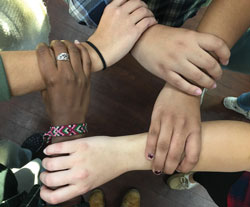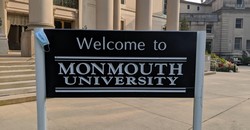Monmouth’s Class of 2024 is the most racially diverse class yet, with students of color representing 33.1 percent of the class, according to President Leahy.
This is compared to 28.7 percent of last year’s incoming class and 29.0 percent the year before that, Leahy said.
He also said that Monmouth’s success with student diversity resulted from the accrual of several efforts over the last decade. “It starts with making all students feel welcome and wanted on our campus, which is a message we try to send in everything from our recruitment materials to our highly personalized on-campus admission programs,” he said.
Leahy also mentioned that the introduction of the Intercultural Center in 2019, with Dr. Zaneta Rago-Craft as the director, has paved the way for the development of a more diverse community.
“It is an exciting benchmark for our University and I trust that our community will continue to grow in its diversity for many years to come,” said Rago-Craft.
According to Monmouth’s website, the Intercultural Center promotes university-wide shifts towards diversity, inclusion, and respect. It also provides programs, educational opportunities, and consultation that supports the academic, social, and professional success of historically underrepresented campus community members including (but not limited to) People of Color, LGBTQIA+, first-generation, low-income, international, and religious minority members of the University.
“It’s quite possible that prospective students saw the existence of this Center and the outstanding work Dr. Rago-Craft is doing as emblematic of our commitment to continually improving on issues related to diversity, equity, and inclusion,” said Leahy.
Rago-Craft emphasizes the importance of building up the skills and empathy required to understand the various experiences of others.
She said, “Because so many of our K-12 schools remain economically and racially segregated, attending university provides one of the first opportunities to build authentic and meaningful relationships across lines of difference.”
Rago-Craft has also been named Advisor to the President on Diversity & Inclusion.

The University has developed a five-year plan to increase diversity on campus. Two recent initiatives involve renaming Wilson Hall to “The Great Hall at Shadow Lawn” in June and creating a crowd-sourced resource repository on race, racism/anti-racism, and policing and equality found through the library website.
Leahy continued to stress the importance of diversity at Monmouth, “We all know that learning and problem-solving are more robust and effective when there are different voices and approaches.”
He continued, “We have a responsibility to get students to think critically about race and privilege and unconscious biases and many other things that might prevent them from being informed and critically aware citizens of the world. Part of our role as educators is to get students comfortable with going out into our diverse world after graduation—even if we challenge them to be uncomfortable at times before graduation.”
“By answering the call to build a more welcoming campus environment, we will all only become more inclusive scholars, employees, and colleagues at a time where the world around us demands it,” said Rago-Craft.
GRAPHIC MADE by Angela Mascla
PHOTO COURTESY of Monmouth University




